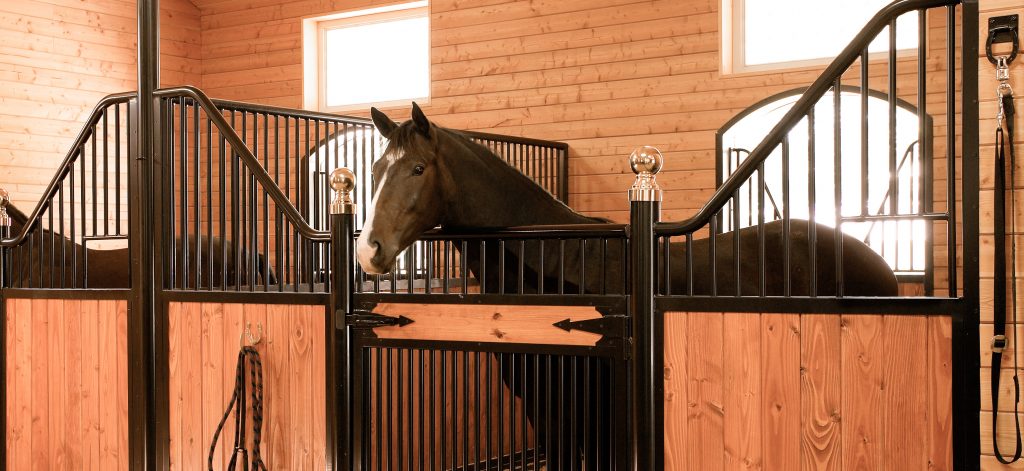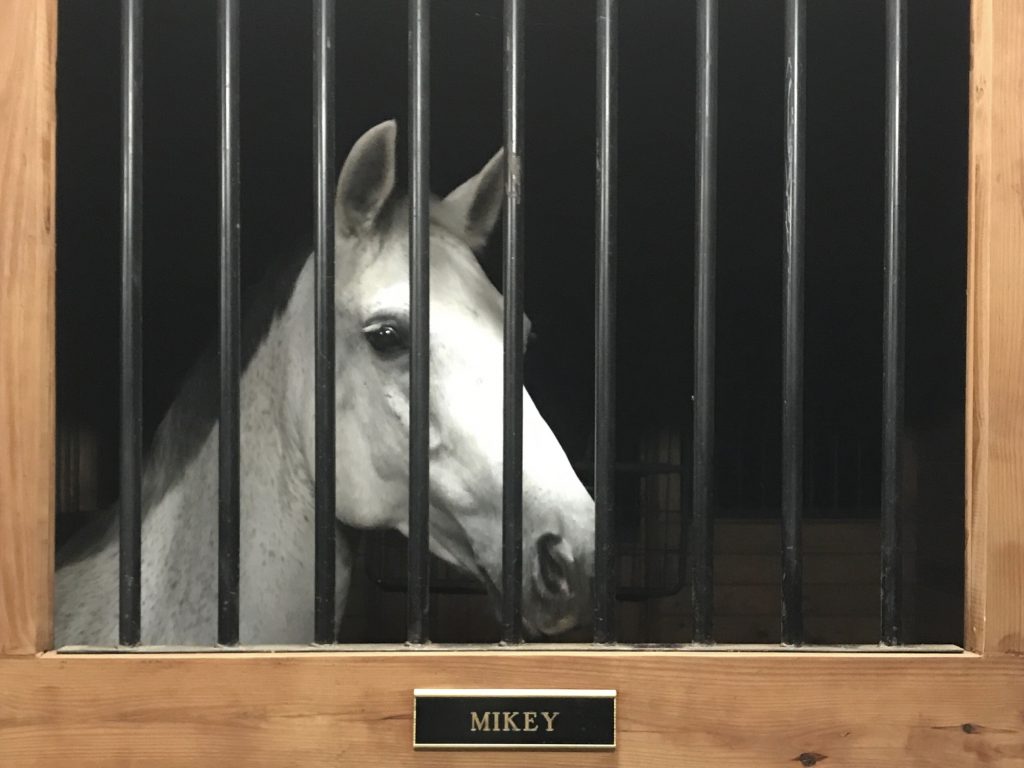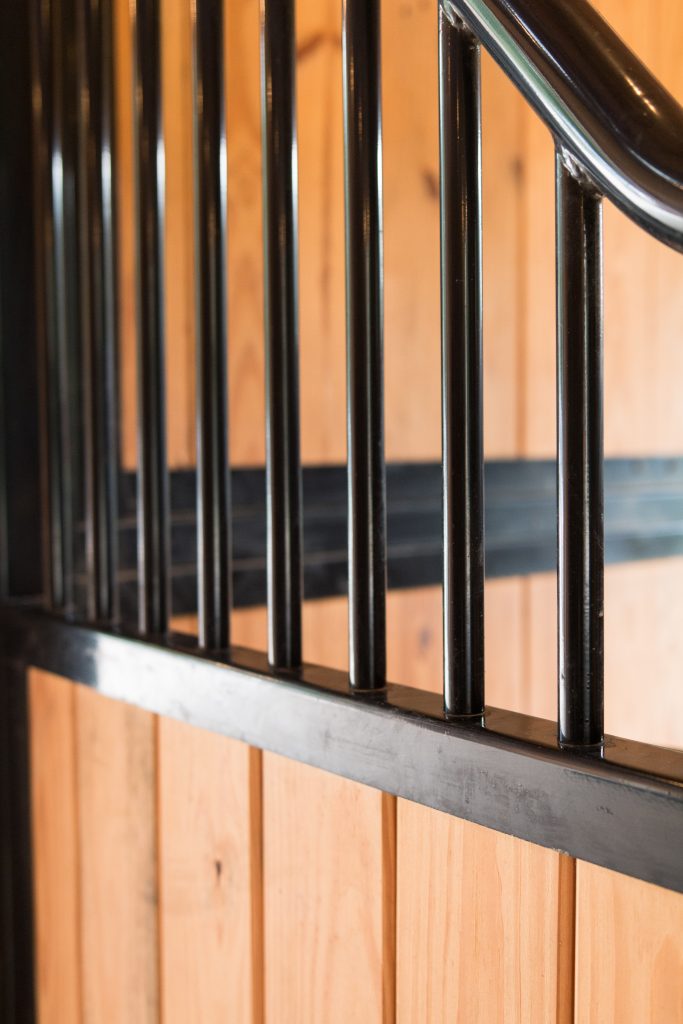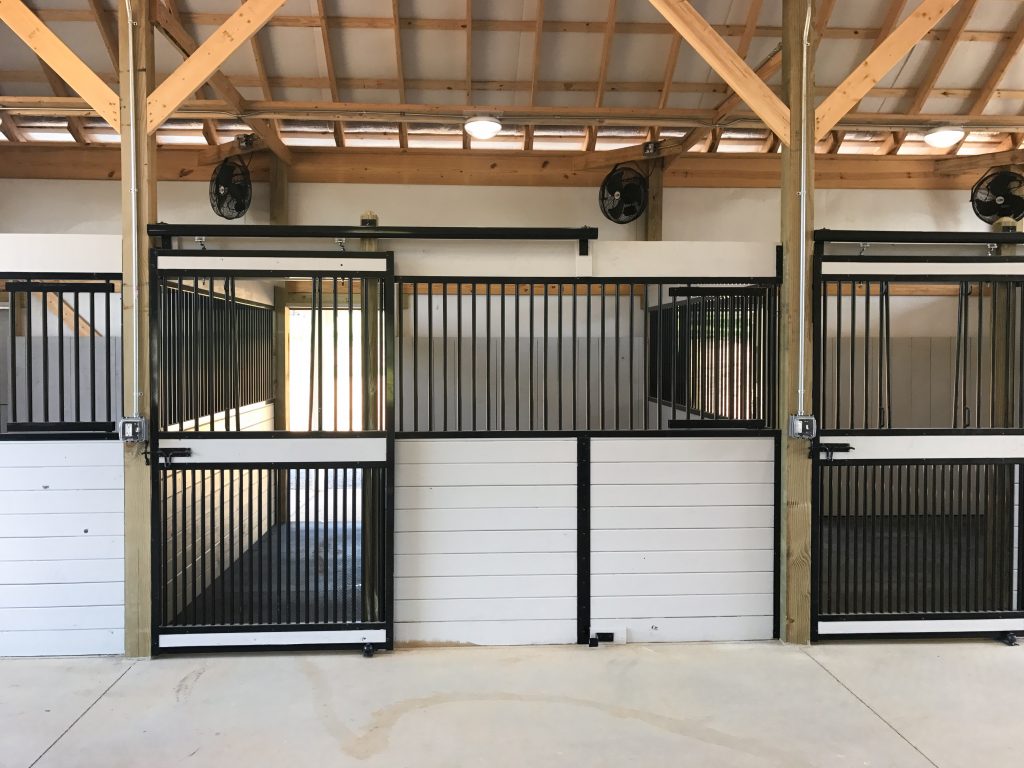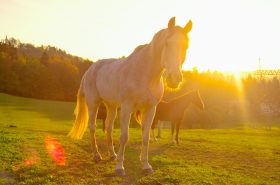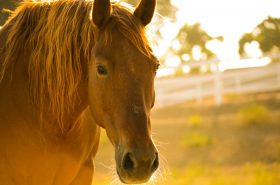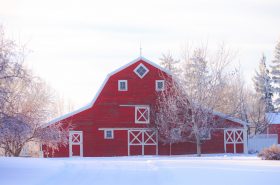Congratulations if you are planning a new barn and designing the stalls for your horses! I loved the design process and I wanted to share some basics to get you started.
Stall Size
First step is to decide how big you want your stalls. A 12’x12’ is the standard size for horses unless you have ponies or drafts. You could get away with 10’x10’ for ponies and minis. For draft horses a 16’x16’ stall is standard. Mares and foals would be comfortable in a double stall, so 12’x24’ or something similarly spacious. If you have a larger budget I would recommend building larger stalls than the sizes listed. Your stalls scan never be too big!
Stall Fronts
There are so many options for stall fronts. You can find many designs at Ramm Fence. If you want to create custom stall fronts you can do that. You can get fancy with the Nobelman or Tuscany Design. Both styles are european-inspired. The Nobelman and Tuscany allow for solid bottom fronts or mesh. Stall fronts come in galvanized or powder-coated black. I would recommend you have a wider center aisle if you go with the Tuscany style fronts since the doors open into the aisle and horses love to reach out at the people and horses passing by and can get feisty.
Other stall front options are the Oxford or Cambridge. These are lovely designs. The Oxford is a favorite with the do-it-yourselfers. The Cambridge comes in powder-coated black and features the “one touch” sliding tack system.
The Essex and Derby style stall front designs are more budget friendly. They come in galvanized metal.
All stall front designs are most importantly safe and will stand the test of time.
Stall Dividers
You may opt to have the full dividing wall open with bars. This is great to bring in light and allow airflow. It’s also great if your horses get along or need to see each other to be happy. There is a semi open option. In this case the bar opening is only a portion of the dividing wall. This allows for airflow but also provides some privacy to those horses that need it. Lastly, you may opt for a solid wall. Some horses are happiest without contact with their neighbors. This is a popular option for stallions or boarding facilities where horses are coming and going and horses get new neighbors all the time.
Stall Wall Wood
Douglas fir or pine tongue and groove wood is used to build the stalls. I recommend using a piece of redwood at the bottom since it will be exposed to the most moisture. Now it’s time to decide what color to stain the wood. I sealed mine with a clear marine stain because I like the look of natural wood and I like how it kept the interior brighter. Stain color options are endless. It just depends on what you like.
Stall Flooring
My preferred stall flooring are vulcanized mats. They do not absorb moisture. They provide a bit of cushion. And they last for years and years!
Stall Waterers
One option for providing water is to hang buckets that need to be filled daily. If you are hanging anything in your stalls make sure the hooks are horse friendly and safe. Pros to hanging buckets is there is no maintenance and you know how much water your horses are drinking. Cons to hanging buckets is you have to fill them everyday.
Installing auto-waterers is the other option. There are many different watering systems out there. I live in a winter climate where I need my water and pipes to be heated. Pros to having auto-waterers is they provide clean water all day long. Cons to having auto-waterers is there is maintenance involved and things can break and need to be repaired.
Stall Fans
I do not have stall fans mainly because my horses live out 24/7 from about May – October. If they were living inside during the warmer months I’d choose the 18” Basket Fan at Ramm Fence. They are designed with an enclosed motor and sealed ball bearings so they can be used in wet locations such as a barn.
I hope this was helpful to get your started with your horse stall design. There are so many options available. Part of the fun is discovering them all and then choosing your favorites!
If you have any other tips for stall design please leave a comment below!
Love this post? We think you will like Everything You Need to Know About Horse Stalls
**
Erin Gouveia of Silver Oaks Farm is an accomplished equestrian, award winning photographer, and an artist. She was born and raised in San Diego, California, graduated from Colorado State University, and now resides in Park City, Utah on a small ranch with her husband. She has had careers in Medical Research, Zookeeping, and most currently Photographer at Erin Kate Photography.
Follow Erin on Instagram at @silveroaksfarm and find her equestrian inspired fine art photographs and handmade goods in her Etsy shop SilverOaksFarm.

